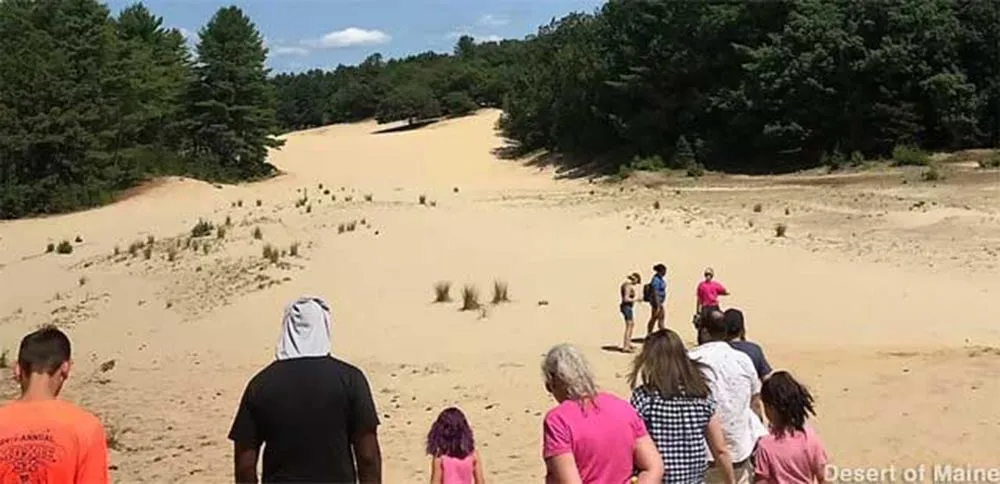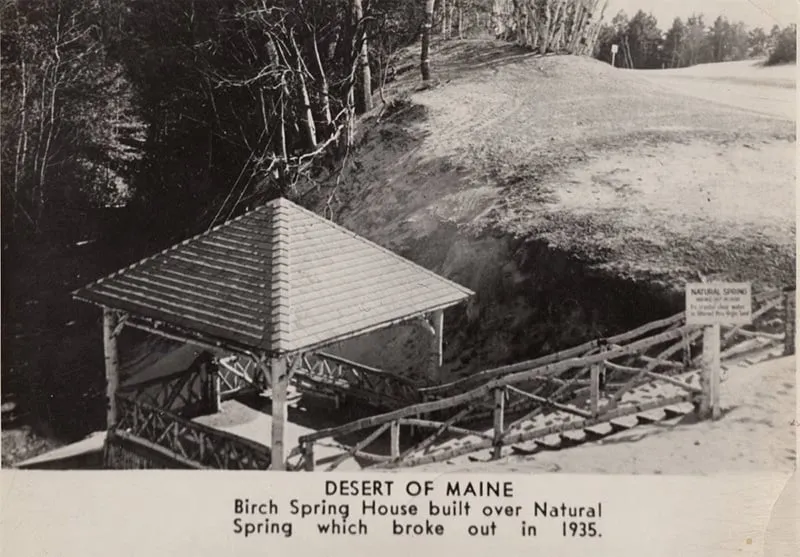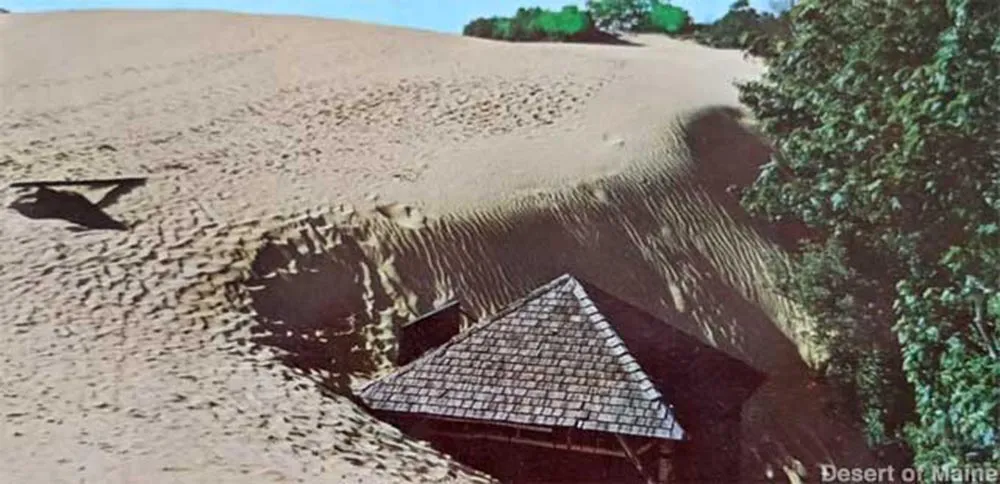Maine, the northeasternmost state in the United States, is famous for its rich natural beauty, rugged rocky coastlines, and lush green forests. Few people know that hidden within this land is a unique “desert” called the Maine Desert. This peculiar tourist destination, located in the town of Freeport, Cumberland County, has long been a popular spot for visitors due to the intriguing contrast between sand dunes and green forests.

In 2021, Maine welcomed over 15.6 million tourists, generating a revenue of $7.8 billion USD, surpassing the figures of 2019. (Photo: pressherald)
Although Maine does not have a desert in the conventional geographical sense due to abundant rainfall, the Maine Desert still offers a unique desert experience with its distinctive “rolling sand dunes.” This vast area of brownish-yellow sand and silt, spanning approximately 160,000 square meters, is nestled within a coastal forest near Freeport, creating an exceptionally special and attractive landscape.
The Maine Desert has been known by this name for about a century, renowned for its “rolling” sand dunes originating from the last glacial period. Thousands of years ago, glaciers covering the Maine region ground rocks into sand and silt before receding. These sand layers, under the influence of wind and time, formed unique sand dunes, likened to the “Sahara of New England.”

Visitors explore the “rolling” glacial sand dunes at Maine Desert, a unique tourist destination in New England. (Photo: roadsideamerica)
This glacial sandy land was initially covered with fertile topsoil and lush vegetation. In 1821, the William Tuttle family purchased this land and established Tuttle Barn Farm. However, due to unsustainable farming practices that depleted soil nutrients, along with overgrazing by sheep, the topsoil of Tuttle Barn Farm gradually eroded. The underlying glacial sand layer was exposed and quickly spread, covering the entire farm area.
Maine Desert Journey – From Abandoned Farm to Tourist Attraction
Tuttle Barn Farm was abandoned in 1890, and the farmhouse burned down in a fire in 1919. Afterward, the land was called “Sand Farm” and gradually became a curiosity attracting locals.
In 1925, “Sand Farm” was sold to Henry Goldrup, who recognized the tourism potential of this land. He turned it into an attractive destination, drawing visitors with its unique natural scenery, strange “rolling” sand dunes, and the beautiful nearby coastline.

The “golden age” structure of Spring House at Maine Desert. (Archival photo: Mela Heestand)
However, efforts to preserve the architectural structures of Tuttle Barn Farm were unsuccessful. Spring House, built in 1935, gradually became buried under layers of sand up to 7.6 meters thick.
After several changes of ownership, Maine Desert was acquired in 2018 by the couple Mela and Doug Heestand. In 2020, they began a project to renovate this iconic landmark, with the goal of preserving its heritage and developing sustainable tourism. Their plan includes transforming Maine Desert into a living history museum, restoring Tuttle Barn Farm, excavating Spring House, and building about 18 unique A-frame cabins to serve tourists.

In September 2020, geologist Josh Smith’s team excavated Spring House, searching for traces of the ancient underground spring. (Photo: roadsideamerica)

Mela and Doug Heestand, the new owners of Maine Desert, with a passion for preserving and developing heritage. (Photo: newengland)
Currently, Maine Desert has opened to tourists in the summer of 2022, from May 7th on weekends and daily from after May 30th. Visitors can participate in hiking tours on beautiful trails, explore unique “rolling” sand dunes of glacial origin, experience the campground, playground, gem village, visit the sand museum, and farm museum.

Maine Desert is open to visitors from the summer of 2022, promising unique travel experiences. (Photo: Chris Bennett)
Maine Desert is not only a unique tourist destination but also a testament to the transformation of nature and the impact of humans on the environment. With the conservation and development efforts of the current owners, Maine Desert promises to continue to be an attractive destination, drawing visitors from all over the world to explore and experience the wonder of a “desert” in the heart of green New England.
(Reference sources: Theculturetrip, Atlas Obscura)